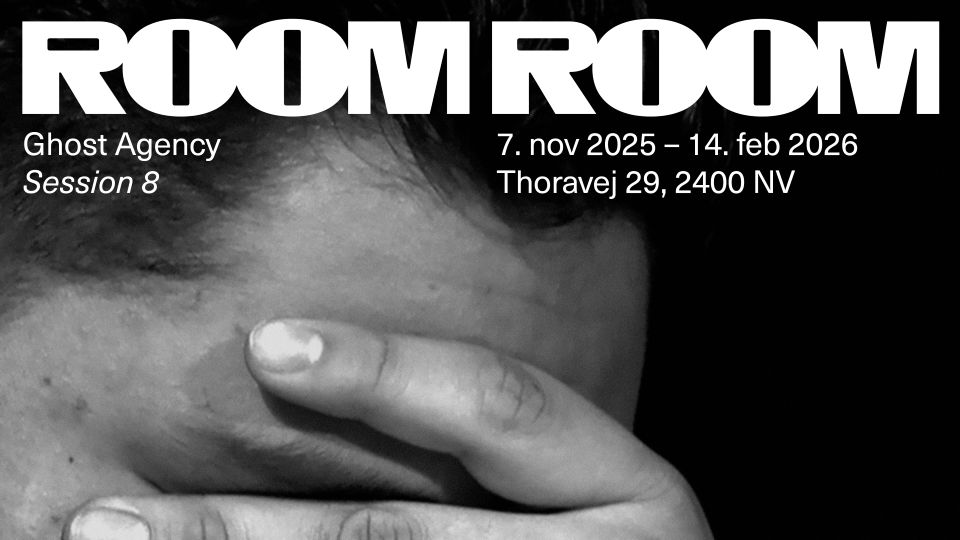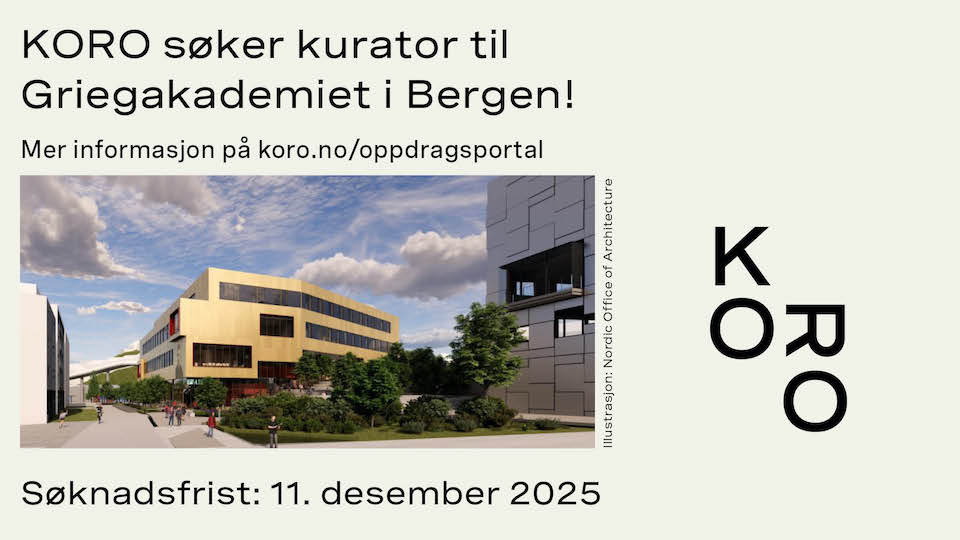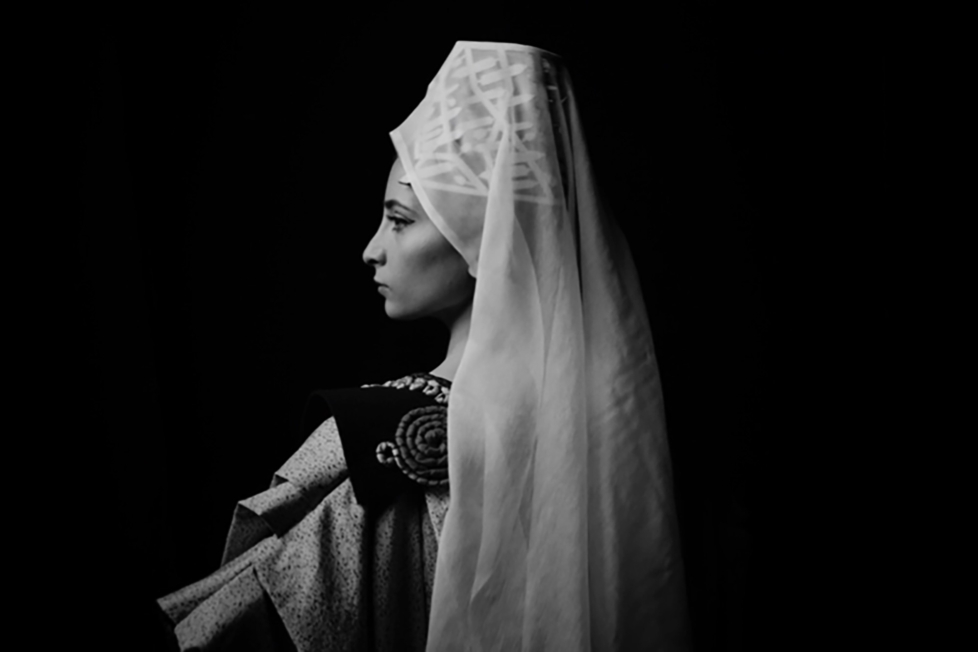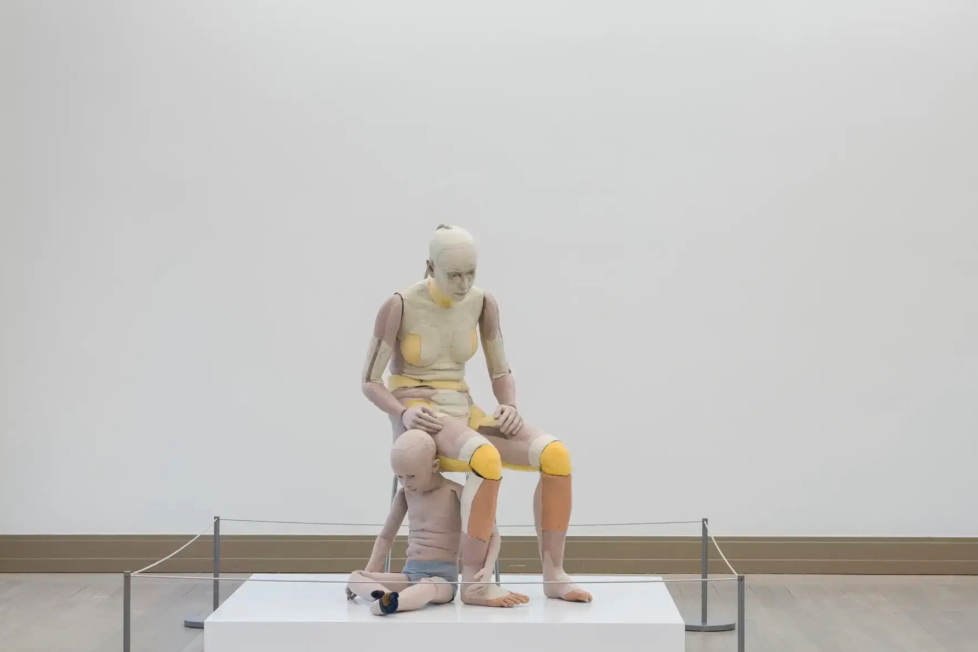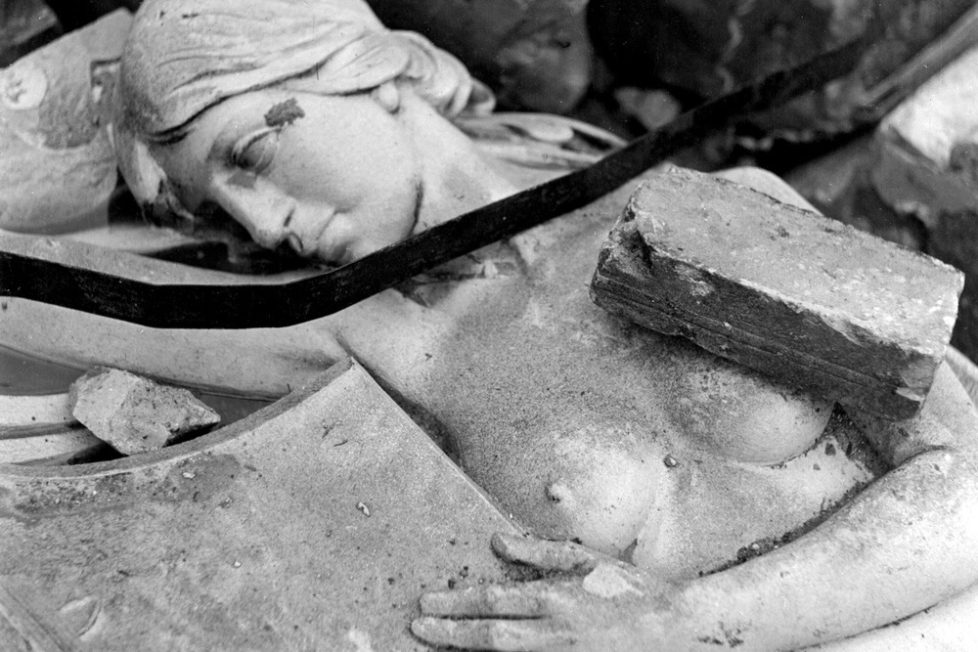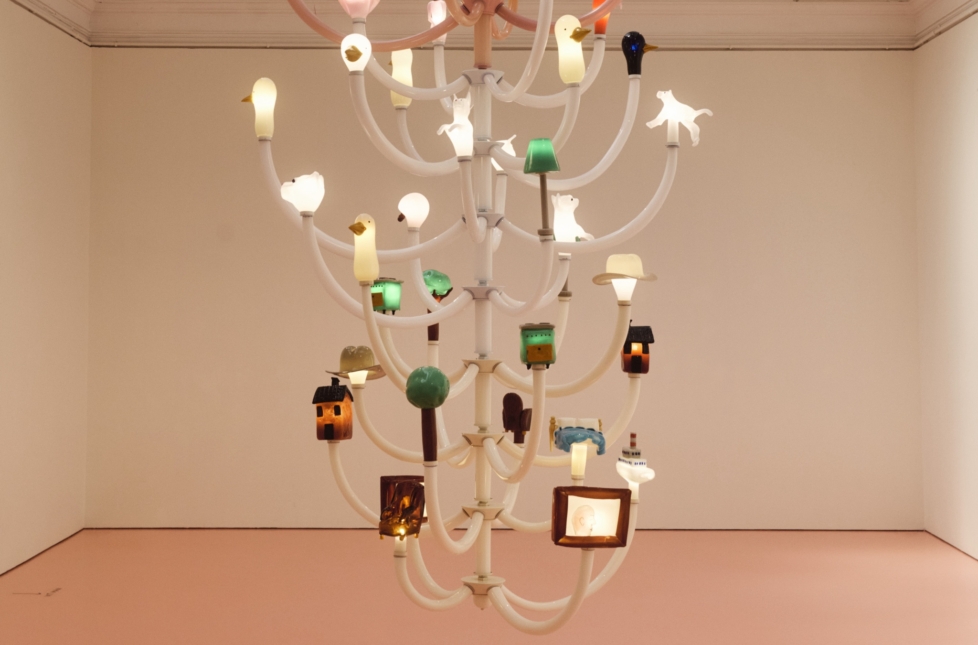
Breaths of fresh air are blowing through the halls at the National Gallery of Denmark (SMK) these days. The substantial acquisitions made for the SMK collection just before summer thanks to a major donation from the New Carlsberg Foundation are now arriving in the galleries, injecting new life into the museum. Kristoffer Akselbo’s small walled-up space has been set up, waiting for him to repeat his disturbing performance in there soon. Nina Beier’s pile of earth is now resting in the Sculpture Street with a sea coconut perched on top. And, at the bottom of the large auditorium, the Years collective is in the process of installing eight white beds that also double as a sound installation.
Just a few days before, the museum reverberated with a very different kind of sound. Energetic folk music blasted out into the great hall while a crowd of Kurds danced a chain dance, arm in arm. Several visitors jumped in and joined the dance while others cheered on from the stairs. Meanwhile, visitors could also get a cutting-edge haircut in the Noise Salon or go browse in Underbelly, a pop-up satellite of a Rotterdam bookstore. Occasionally, composer Ioana Vreme Moser ran a powder puff hooked up to electronics down her cheek, eliciting the most wonderful crackles in the speakers. A far cry from the anaemic pseudo-events we have gradually become accustomed to in the art world, this was the opening of Unboxing the Goodiepal Collection. But one might also describe it as the culmination of six years of interventions which began in 2014 when the museum purchased a work by artist and composer Goodiepal.
It all began with the installation of El Camino del Hardcore ≈ Quest for the Interior of the North (2014), comprising a velomobile and various objects collected on the artist’s travels through Europe. Goodiepal quickly became something of a fixture at the museum. He moved around the various parts of the work and also used the installation to store other works and personal belongings. He started pestering the curators with ideas, hanging out in the “warehouse,” (his term for the museum’s storage facilities), and arranging impromptu lectures at the museum.
Originally from the world of sound and music, Goodiepal (b. 1974) was clearly fascinated by the entire museum machine and the thinking and methodology behind the handling, storage, presentation, and dissemination of art in such a place. So when El Camino del Hardcore was moved into storage, it was only natural that Goodiepal’s next step would be an exhibition of his own collection – at the National Gallery of Denmark. At least, that is how things turned out.
The museum’s acquisition of another work by the artist, a mechanical bird, became the focal point for a gradual installation of his extensive collection of sound art. And even though Goodiepal has a rather insistent sort of personality and is quite the hacker, it is still incredible that the National Gallery actually went along with it all for so many years. It is this collection, in its full extent, that is now being displayed in six interconnected chambers in the heart of the museum.
Unboxing Goodiepal’s collection feels like stepping into a cabinet of curiosities with extra bells and whistles. The display is so overwhelming and crammed with bits and pieces that you could only hope to plumb it all if you visit the exhibition several times. As it turns out, many do. Especially young people, who come to hang out on the soft golden-brown carpet covering the floors, creating a sound-proofing backdrop that emphasises where the collection comes from and what it’s all about.
It begins with sound. And the sound is in a box, a crate, or in a cassette case embellished with cute drawings and coloured microscript. Or hiding in one of the countless home-made and eccentrically-decorated boxes or instrument cases. It can also be found in the many whimsical and ingenious machines with countless buttons and coloured wires that can make interesting sounds – or maybe even delay time. It’s all about sound, but, unless you turn on the headphones, there is no more sound here than in a regular exhibition of paintings.

From an art-historical point of view, there are nods aplenty to Duchamp’s Boîte-en-valise, to the Surrealists’ enigmatic jewellery, or to Joseph Cornell’s wooden boxes with enchanting micro-universes hidden inside. Yet, at the same time, Goodiepal did not arrive at his special concept by way of the visual arts, at least not initially. Rather, it has grown out of the aesthetics of music, from the unboxing of sound that lies within the individual note – as in visual scores from avant-garde pioneers such as György Ligeti and Cornelius Cardew, which are also presented in the exhibition’s first room – to the way sound is wrapped and boxed: instruments in all shapes and sizes, boxes for cassette tapes, covers for LPs, and more.
In a sense, there is a journey from pure sound to a place where image and sound have become equals. A certain movement takes place from the electro-spheric ambience of The Sea, his very first composition from 1991, by way of his hacked advertising jingles from around the year 2000 (Chupa Chups, Nokia, Bang & Olufsen, etc.) to the eccentrically-bent flight case for a lute that he carried around with him for several years. This all leads up to his first encounters with the visual arts, such as when he contributed the audio for Jakob Boeskov’s video War Wizard from 2003. It was also around that time you could find Goodiepal hunched over his homemade planet game on a rug in the streets of Copenhagen.
The sound I will probably always associate with Goodiepal is his humorous electronic period from the turn of the millennium, full of tinkling and clanging, and garnished with lute and flute – especially the Nars Beacon record. It’s like pop music that has meant something special to you at some point in your life. The sound also works quite well as an inner soundtrack to the exhibition, which is not just an unboxing of a collection comprising a lot of other artists’ works, but also a kind of retrospective of Goodiepal’s own oeuvre – reflecting the collective common ground on which he stands. Especially, when viewed in this light, the exhibition becomes more than a presentation of a collection. Just as the phenomenon “Goodiepal” merges with Goodiepal & Pals, the Banana School, and the various other groupings that have been part of the project over the years. The journey has been long, and along the way image and sound have converged in a very special way. This aspect is very clearly conveyed by the exhibition.
In a room that might be called the music library, all the walls are lined with LPs and CDs from floor to ceiling. Here you can make your own inferences, spotting lines connecting all those with whom Goodiepal has interacted over the years. Goodiepal’s characteristic homespun Gothic script runs across most of the releases like an enthusiastic running commentary.

On the album cover of composer Henning Christiansen’s Konstruktioner (Constructions, 1982), the composer’s dedication reads (in Danish): “From HC to Goodiepal Via BC.” To this, the handwriting replies (also in Danish): “Thank you very much, says Goodiepal. Your wife’s works & yours mean a lot to me.” The kinship between the two is quite obvious. In a way, they have had similar careers, moving from avant-garde composition – within the realms of classical and electronic music, respectively – into the visual arts – the former in Fluxus art, the latter in the resurgence of performance art that has characterised art in the 2010s (and which Goodiepal undoubtedly helped anticipate in the decade prior).
The whole thing has an unmistakably European flavour. “No John Cage here,” as Goodiepal casually remarked at the opening. But it’s not just about the sounds of Ligeti and Stockhausen, folk music and electronica. The exhibition as a whole is permeated by the legacies of everything from Dada to Fluxus, but also by a new European trauma associated with our present-era of immigration; the Kurdish folk dance points to this theme.
At some point during the official opening, I was sat in the café. The curator came by and placed a “reserved” sign on mytable. She explained that I should ideally leave within five minutes because the Kurdish folk dancers were arriving shortly and needed to be served their meal before the bus left. They had to get back to the asylum centre where they live and where they have to sign in twice a day. Being late is not tolerated. Shortly after, the dancers, a group of children and adults, entered the café.
Ever since 2015, when Goodiepal first went to Lesbos to help out stranded Syrian refugees, relief work has been an integral part of his enterprise. Together with his partner Nynne Roberta Pedersen Pedersen and others from the band/refugee organisation Goodiepal & Pals, Goodiepal has repeatedly gone to Serbia to help refugees on Europe’s borders. In Denmark, the group seeks to help make life bearable for people living at the asylum centres by conducting various workshops, drawing classes, a mothers’ group, etc. This very hands-on approach is far removed from the extensive virtue signalling flooding social media these days.
And then there’s the school. Goodiepal has always had an entourage. Once, it consisted of young electronica aficionados. Today, the crowd is larger, and includes high school students, musicians, activists, and dropouts. It is also more formalised, organised around the so-called Banana School (named after the Banana House in Christiania, where Goodiepal and his family lived for a while), which is in session wherever it seems to fit best. Right now, the National Gallery of Denmark is a natural haunt for the school, and on a wall in the exhibition you will find a long handwritten list of the many upcoming activities. While the school is mostly attended by young people aged 18–30, it is open to everyone. One of its principles is that everyone teaches each other – and it seems that any subject goes. However, sound and consciousness appear to be common denominators overall.
A special energy surrounds the Banana School, especially when participants teach each other. I attended a lecture by Dalin Walo on so-called eloptic energy. The event was equal parts lecture and performance, and looking at the audience was almost the best thing of all. The Banana School is quite undoubtedly a place for curious and inquisitive dreamers. Perhaps they dream of a different kind of community centred around art and knowledge, far removed from a bureaucratic education sector that has long since put efficiency above enlightenment.
Some are probably also drawn to the esoteric aesthetics and atmosphere that Goodiepal has always excelled at, and which can easily be criticised if you are so inclined. However, it can also be seen as a bulwark against false notions of transparency, not least regarding the technologies that govern us all – including when we try to exercise criticism. And speaking of old Europe, there is an air of early Bauhaus about it all. A whiff of Johannes Itten telling his students: “Jetzt tanzen wir alle die Farbe gelb!” At a time when most Nordic art academies are affected by all sorts of crises, with no obvious way out in sight, I cannot help thinking that the artists of the future – or whatever they’ll be called by then – will emerge out of banana schools of all kinds, colours and bents.




